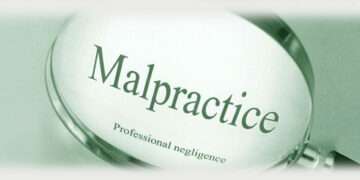The real estate market relies heavily on captivating property images to attract potential buyers and the image editing process has made it easier to improve these pictures. However, it is important to uphold ethical standards when editing real estate images.
Ethical practices in real estate image editing ensure that edited images are actual representations of the real estate property. This means avoiding any misleading enhancements, such as altering an important feature of the visible area. By closely following ethical guidelines, real estate professionals can establish trust with buyers and safeguard the industry’s reputation.
While real estate professionals may have the option of in-house photo editing, outsourcing these services to real estate image editing service providers can offer significant benefits. They have the expertise, prioritize accuracy, and adhere to industry standards ensuring that ethical guidelines are followed in image editing processes.
This blog explores the top 7 ethical considerations in real estate image editing and the positive impact they have on fostering credibility and professionalism within the industry.
7 Top Ethical Considerations in Real Estate Image Editing Services
Real estate image editing is a process that is used to alter and improve the appearance of property images. However, it is important to use this ethically and responsibly. In this section, we will discuss the top 7 ethical considerations that real estate image editing service providers should follow.
1. Accurate Property Representation:
In real estate image editing, it is essential that visuals correctly reflect the property and its surroundings. Ethical image editing practices involve avoiding any misrepresentation or alteration that may mislead the actual appearance of the property. This helps in building trust and credibility with potential buyers as it reflects honesty and transparency. Images that display an accurate representation of the properties allow the buyer to have a clear understanding of the attributes. This enables a buyer to make the right decision based on the property’s image. By following the ethical guidelines, professionalism and adequacy of the images are contemplated.
2. Transparency in Editing Practices:
Being transparent in photo editing practices is crucial for ethical real estate image editing. This includes being open about retouching, color adjustments, or other important alteration made to the images. Providing clients with a clear understanding of the editing process is a great way to ensure transparency and establish credibility. It involves disclosing any modifications made to the property images to potential buyers or clients. Transparent editing practices promote ethical behavior and foster positive relationships with clients, setting the foundation for long-term partnerships.
3. Maintaining Consistency in Image Editing:
Consistency in photo editing is important for creating a cohesive representation of properties in real estate image editing. This is done to improve the visual experience of a potential buyer. Consistency ensures that the images align with the property’s actual appearance, avoiding discrepancies or misleading impressions. By adhering to a consistent editing style, professionals can enhance the overall presentation and ensure that all visuals accurately represent the properties. This includes maintaining uniformity in color correction, lighting adjustments, and overall image composition. Consistency in editing practices not only builds credibility but also helps to establish a recognizable and trustworthy brand identity in the real estate market.
4. Preserving Contextual Integrity-
Contextual integrity means maintaining the original and correct context in terms of appearance, surrounding area, and location. Excessive alteration and adjustments should be avoided as the image should accurately reflect the landmarks, & neighboring areas, and maintain its natural surroundings. By preserving contextual integrity, real estate professionals ensure that potential buyers or tenants have a realistic understanding of the property’s environment.
For example, if an image is edited to make it appear closer to popular landmarks or amenities than it actually is, it can mislead potential clients. This misleading context interpretation can lead to trust issues in the real estate business. Therefore, maintaining contextual integrity is crucial to provide an accurate representation of the property and avoid any deceptive practices.
5. Avoiding Misleading Enhancements:
In real estate image editing, one important ethical consideration is to avoid misleading enhancements. This means refraining from making changes to the property’s appearance that could deceive or mislead potential buyers or tenants.
Misleading enhancements involve altering the visual representation of the property in a way that exaggerates its features such as proportions and scale or creates a false interpretation. This could include digitally modifying the size, shape, or condition of rooms, landscapes, or amenities to make them appear better than they actually are.
By avoiding this, real estate professionals uphold their ethical responsibility to provide truthful information, maintain integrity and build trust with potential buyers. They aim to present the property in its true form, allowing potential buyers or tenants to make informed decisions based on accurate representations.
6. Compliance with Laws and Regulations
Compliance involves respecting copyright laws and obtaining proper permissions when using images or graphics in edited photos. It also means providing accurate information without making false claims or exaggerations that could mislead potential buyers.
Respecting privacy laws is another aspect of compliance. It requires obtaining consent or blurring personally identifiable details when editing images that involve people or sensitive information like family photographs.
By complying with laws and regulations, ethical standards are maintained, privacy laws are protected and all legal consequences are also avoided. With this being in place, real estate professionals are able to maintain trust and credibility and continue with positive relationships with their clients.
7. Effective Communication and Customization in Editing
When it comes to effective communication, it involves actively listening to client’s needs, concerns, and preferences. By establishing clear channels of communication, professionals can ensure that clients’ expectations are understood and addressed throughout the editing process. This ethical approach fosters transparency, avoids misunderstandings, and promotes a collaborative working relationship.
Customizing real estate image editing is another important ethical consideration. This means tailoring the editing process to the unique characteristics and desired outcomes of each property. By understanding the key selling points and objectives of the client, professionals can customize the property’s features while maintaining its authenticity. Seeking client approval before finalizing the image will ensure that the image meets the required expectations.
In Conclusion
Adherence to ethical guidelines in real estate image editing is paramount for maintaining professionalism and fostering trust in the industry. These ethical considerations encompass accurately representing the property, transparency in editing practices, contextual integrity, consistency, avoiding misleading enhancements, compliance with laws and regulations, and effective communication. By selecting a photo editing outsourcing company that upholds these ethical principles, you ensure that your property is represented truthfully and professionally. This not only contributes to the integrity of the industry but also builds trust with clients. Making ethics a priority in selecting an outsourcing company is crucial for achieving high-quality results and maintaining a positive reputation in the real estate image editing field.
Also, Read: 46.688.259 Arno Jose Arno Servicos Blumenau

















